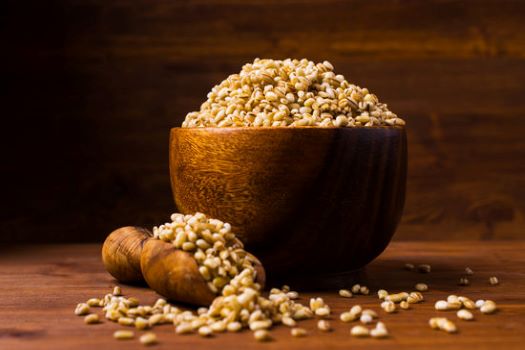
November 30, 2016 3 min read 1 Comment
Origin of barley
Barley is one of the oldest known domesticated grains, going back as much as 10,000
 years. Throughout the course of history, barley has been used as both a food source as well as the basis of the first alcoholic beverages. Barley water is also considered a traditional tea-like drink, served both hot and cold, and has been consumed across both Europe and Asia. It is consumed for both it's refreshing qualities as well as for medicinal purposes.
years. Throughout the course of history, barley has been used as both a food source as well as the basis of the first alcoholic beverages. Barley water is also considered a traditional tea-like drink, served both hot and cold, and has been consumed across both Europe and Asia. It is consumed for both it's refreshing qualities as well as for medicinal purposes.
Nutritional profile and health benefits
Like many other grains, barley comes in both hulled as well as pearled varieties. However, only the hulled version is considered a true whole grain. With hulled barley, only the outermost inedible shell is removed from each grain. The pearled variety is polished as well which removes the bran layer and often even some of the inner endosperm layer as well. This practice makes pearled barley less nutritious than its hulled counterpart.
Hulled barley is a high fiber, cholesterol-free, low-fat whole grain that offers a host of nutritional and health benefits. It is also a good source of important vitamins and minerals including calcium, magnesium, phosphorous, potassium, vitamins A and E as well as niacin and folate. Barley is also a significant source of selenium, copper, and manganese.
The insoluble fiber present in hulled barley helps maintain large populations of friendly bacteria in the digestive tract assisting intestinal health.
In addition to all of these health benefits, the gluten associated with the fiber content of barley can also make the grain behave as an all-natural appetite suppressant that can suppress food cravings. When consumed, the fiber in hulled barley expands in the stomach and is digested rather slowly so that you feel fuller for longer.
Hulled barley facilitates digestion and may even have anti-diabetic effects. It seems that hulled barley stabilizes blood sugar levels and can help keep post-meal blood sugar levels 20-30% lower than many other grains. These effects may last up to 10 hours and reduce blood sugar swings that cause food cravings.
Lastly, eating barley on a regular basis can help reduce the risk of heart disease. Beta-glucan, a type of soluble fiber, contained in barley has been associated with lower cholesterol. Studies have shown that people with higher fiber diets and lower cholesterol tend to have a reduced risk of heart disease and heart attacks.
How to cook barley
Hulled barley makes for an inexpensive, filling, and tasty option to add to meals. Once cooked, barley offers a chewy texture and pasta-like consistency due to its gluten content. Its preparation is similar to cooking rice (e.g. 2 parts water or other cooking liquid like stock to 1 part grain) but cooking time may take longer, typically between 50-60 minutes.
Some believe that it is also helpful to soak hulled barley overnight to soften the grains first (we will be posting an article about soaking grains). Once cooked, the barley should be chewy, yet tender. If the center of the kernel is still hard or starchy, the grains may need another 10-15 minutes of further cooking.
Ideas for preparing barley
Given the longer cooking times when preparing hulled barley, it is often suggested to cook the grains separately and then add them into any recipe at the end. Barley may also be served on its own with some seasoning as a side dish or in grain salads. Hulled barley can be used as a substitute for starches like rice or potatoes. It can also be used to make hot cereal or added into a favorite soup, salad, or pilaf.
Note- Like wheat and rye, barley is a gluten grain and is often not suitable for individuals with gluten intolerance or celiac disease.
Related Products:
Recipes:
Related Blogs:
Thanks for reading this Be Still Farms Blog article. To sign up for more news/articles and/or recipes, click here. For more about us, click here. To shop our certified organic products, click here.
Please comment and share and we look forward to serving you in the future!
Comments will be approved before showing up.

April 10, 2024 2 min read

April 08, 2024 3 min read
Unlock the potential of organic amaranth grain to elevate your cooking and baking. From salads to energy bars, explore endless possibilities for delicious and wholesome meals. Join us on a culinary journey with this ancient superfood.

March 27, 2024 3 min read
© 2024 Be Still Farms- Real, Fine Organics.
Privacy | Terms | Refund Policy | Organic Certification

Tradologie
August 19, 2021
Nice Article!